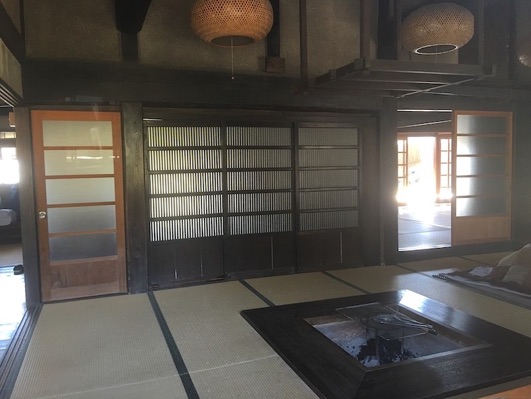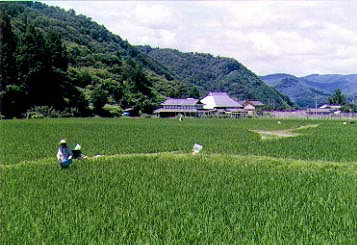






























Inside are tatami mat rooms and a traditional Japanese irori or hearth. This is where the family did its cooking and sat around for warmth. In a traditional thatch roof residence, the irori also has another important function: the smoke prevents insects from taking up residence in the thatch above, keeping it healthy.
Hattoji features many restored thatched roof dwellings, but the surrounding area has a lot of silver-colored roofs like this one. They’re actually metal shells covering old thatched roofs - much cheaper than repairing the thatch, since these days there are few people who know how to do it and it’s prohibitively expensive for most people.


